 |
|
This review may contain light spoilers. Skip To The Verdict? »
Jonah Hex must be synonymous with the modern western comic. With 14 books out, it’s probable that in many comic stores it’s the only western on the shelf.
This might be a good and bad thing.
While Jonah Hex: Counting Corpses is the 9th book on Jimmy Palmiotti and Justin Gray‘s generally solid ongoing, there hasn’t been an amazing amount of variety in the kind of story presented.
If you didn’t like the previous books, you might not like this one. Personally, I couldn’t wait to get into it.
 The collection starts off with The Hyde House Massacre illustrated by Paul Gulacy, last seen back in Guns Of Vengeance. The first half is a bit of a treat, running as an almost silent comic.
The collection starts off with The Hyde House Massacre illustrated by Paul Gulacy, last seen back in Guns Of Vengeance. The first half is a bit of a treat, running as an almost silent comic.
His art carries it well, with the transitions clear and action visceral even without sound effects.
I love when a comic pulls this off and sequences like this are great to point towards when someone tries to define “comics” by the inclusion of written words.
The second half runs more as expected, even ending with Hex riding off into the sunset, uttering very Hex-like words. It was a good start to the book though – nice to see the authors attempting small experiments.
My only real complaint with this story was that the primary female character isn’t illustrated nearly as well as the males – I’m not sure why I’ve had this complain so often with Jonah Hex comics, but it’s probably a problem with comics as a whole. Here, while she is hyper-sexualized, my actual complaint is that her face just doesn’t seem like it’s part of the same illustration in many of the panels.
Sometimes it’s obviously the lighting – all the males have deep shadows, yet she’s clearly lit, even though there’s no indication of how this is happening. It looks as if her face was pasted into the scene. The head being just a tad too big doesn’t help either. Very odd.
The second issue collected is the most important to Hex continuity. Titled The Great Silence and illustrated by Darwyn Cooke, it’s one that may take you by surprise.
Of the stories in the book, I found it to be the most memorable.
Cooke’s art, here at an exaggerated level of cartoon styling, sets the reader up for a fall.
Coupled with an introduction containing some of the funniest sequences yet in a Hex comic, Cooke was a perfect choice for what ends up being one of the darkest stories.
It’s the juxtaposition that makes this one so unique – a more realistic or “gritty” style would cheapen the events.
While it may not be as accessible to people not already familiar with the characters, the drastic heights and depths of this short story, coupled with the simple-at-first-glance art, would make for intriguing study.
Being wary of spoiler and space concerns, I’ll save further discussion for another time. I do want to mention that it starts with an absolutely classic (and hilarious) “jumping a gorge on a horse, in front of the sun, while shooting people below” two-page spread that I’ve found unfortunately impossible to reproduce well.
 Next up is The Divining Rod. This story, a bit of whodunit featuring a widow and a preacher, is notable mainly because it reunites legendary artist Dick Giordano with the character – as a contributor to the 1977 title, he last drew Jonah in 1984.
Next up is The Divining Rod. This story, a bit of whodunit featuring a widow and a preacher, is notable mainly because it reunites legendary artist Dick Giordano with the character – as a contributor to the 1977 title, he last drew Jonah in 1984.
Giordano is certainly a quality craftsman, and it’s always impressive to see work by anyone with a more than 50 year career drawing comics. I couldn’t honestly say it’s his best work in this issue, though, and the story doesn’t really separate itself from the pack. Not really disappointing, just a few inconsistent panels here and there.
There is one two-page spread of some interest, with no panel borders and some relatively unique use of space, but I feel like it was probably better in the pencils and black and white inks – it’s hard for the colors to deal with such a dynamic layout.
 The next tale, Too Mean to Die, features Jordi Bernet. It seems that Hex just can’t end up in a swamp without running into some blood thirsty hicks.
The next tale, Too Mean to Die, features Jordi Bernet. It seems that Hex just can’t end up in a swamp without running into some blood thirsty hicks.
Bernet brings his customary strength with mood and male expression, as well as customary cookie-cutter/hair change women – though it’s not as noticeable when there is only one woman in a story.
Over the books, his work has grown on me in some ways, and I’m more attuned to little details – Hex’s leach covered body, baying dogs barely seen through the legs of a group of men. I liked how this particular story featured wide variation in panel size – small jagged ones all the way to several full page panels that were more story driven than pin-up style renderings.
 “You’ll Never Dance Again” follows Hex while he sets a trap for a gang of train robbers. The title already gives away a little too much about the ending of this story, so I’ll avoid giving any more detail.
“You’ll Never Dance Again” follows Hex while he sets a trap for a gang of train robbers. The title already gives away a little too much about the ending of this story, so I’ll avoid giving any more detail.
The art is by Billy Tucci (Shi), who I wasn’t particularly familiar with. His style is very nice, with a lot of soft hatching and meticulous detail.
He brings a careful eye to hands, pistols and lovingly crafted trains. It is a slight shame that the main female isn’t quite as well rounded (magically inflating continuity breaking boobs being one issue) but his highway men and extras are quite memorable.
Of particular note is his fluid approach to violence, with great understanding of physics (sometimes exaggerated for effect) and darkly satisfying death postures. In wider shots, the work felt a bit reminiscent of Dezuniga’s modern stuff. I think I’ll look forward to seeing Tucci’s pencils again.
 The last story, Shooting Stars, again with Bernet, features appearances by a couple past Hex characters. Most notably, The Star Man, is back – exciting to me since I really love that guy and almost wish he had his own ongoing.
The last story, Shooting Stars, again with Bernet, features appearances by a couple past Hex characters. Most notably, The Star Man, is back – exciting to me since I really love that guy and almost wish he had his own ongoing.
This story was relatively light weight – some bounty hunting mix ups and enjoyable interactions. Nothing too dark or laugh out loud funny, but of the quality I’ve come to expect from Bernet and the writers.
I even enjoyed super-joke-of-a-skank Chula‘s return.
I admit, I’m starting to notice how often I have to complain about the art being of inconsistent quality between male and female characters – it’s true that this is a pet peeve of mine and possible that this book isn’t a prime offender.
Bernet simply draws his ladies as he likes them and I’m sure it fits the preference of many male readers.
So did Jonah Hex: Counting Corpses break the mold? Not really.
Along with the rest of the series, with a few small exceptions, they’re tales of betrayal and retribution. The draw is violence, violence to avenge harms perpetrated on those seeking to make a life out in the wild west. This is a general trend in DC’s Westerns, much like their superhero books – their most successful hero (and possibly the most successful modern comicbook hero) Batman, is an iconic figure of vengeance, fighting a war against crime to avenge one murder witnessed in childhood.
It’s a theme that must resonate with many readers. Often, I’m one of them.
But when combined with largely anecdotal storytelling – the usual Jonah Hex issue floats in time, a small segment of his life, but with some conclusion (usually bloody) for another character – this general theme can get a little tiring. Maybe there is a place on the shelves for a Western book exploring a different type of protagonist?
Perhaps the problem isn’t with the title, though. Jonah Hex is a comic in the classic fashion and it’s possible that it doesn’t work as well for reading habits developed alongside modern uber-arc epics (such as crossovers like Brightest Day or intricate self contained titles like Y: The Last Man.)
To put it plainly, you might not want to read a stack of Jonah Hex books straight through.
I am, however, eagerly awaiting the release of the next trade collection. One month between each tale of Hexual violence is about perfect – several months seems too long!
Verdict:
3 out of 5. Not the best of the Hex books, but containing at least one stand-out tale. Jimmy Palmiotti and Justin Gray continue bringing what fans expect.
Darwyn Cooke and The Great Silence are the highlight of this volume, but there is some other work worth seeing. Buy it if you are a fan of Hex.
If you’re looking for an introduction, there are other books that will better serve your needs.
Essential Continuity:
For Jonah Hex, yes. Each modern Hex trade (so far) has included at least one story that shouldn’t be missed.
Read first:
Read Showcase Presents Jonah Hex and/or Jonah Hex: Welcome to Paradise. Paradise contains the condensed version of Hex’s origin, with a couple extra (but lower quality) issues tacked on.
The contemporary series has been collected in Jonah Hex: Face Full of Violence, Jonah Hex: Guns of Vengeance, Jonah Hex: Origins, Jonah Hex: Only The Good Die Young, Jonah Hex: Luck Runs Out, Jonah Hex: Bullets Don’t Lie, Jonah Hex: Lead Poisoning and Jonah Hex: The Six Gun War.
There are no other optional books for this one, really, but some of those other trades have some additional recommended reading.
Read next:
Following along with the DC Comics Reading Order, the DC Westerns and Jonah Hex‘s own list, the next book will be the 2010 original graphic novel Jonah Hex: No Way Back. It technically came out before this trade, but around the time of the last issue collected here, so we’re placing it after.
I’m looking forward to it – expect that review soon!
















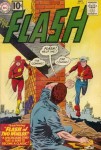
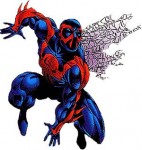




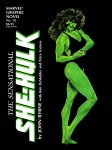


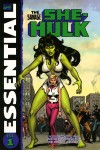
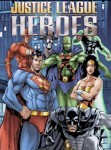
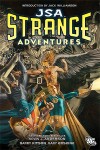



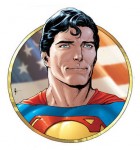
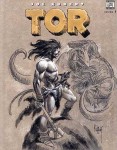

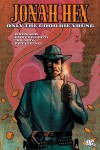
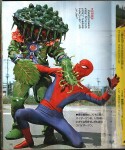
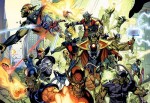

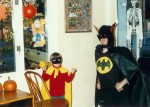


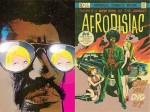
You’ll soon be out of Hex books to review out of Hex books to review; it is always a shame when you read through an ongoing series in a short space of time and have to wait for the next trade to be released.
I have enjoyed the Hex series so far and it’s thanks to your reviews that I started on them.
[Reply]
Glad you’re liking it! I’ve definitely become a Jonah Hex fan. I never would have picked up one of these books if I hadn’t started on the DC list, but I’m really glad I did.
Luck Runs Out is still my favorite, but I do have one last book – No Way Back, which has my favorite Hex artist on it, Dezuniga. So looking forward to that!
[Reply]
Spoiler
As, seemingly, a fan of Jonah Hex and the character Tallulah Black, I found your not mentioning her appearance in issue 50 a little “puzzling”. Here is the “little spoiler” you may not have noticed in the story. Remember back in issues 16 and 17, “THE BALLAD OF TALLULAH BLACK” (which introduced the character) you mentioned you liked the “little girl” who spoke to Tallulah and Jonah? Notice her appearance here again in issue 50. With the death of Tallulah and Jonah’s daughter? The little girl is THE GHOST of the daughter. This was confirmed to me by Jimmy Palmiotti himself on the DC boards. This story was planned way back then. Shows how one issue can lead into future issues, without any noticeable set-up. Past characters and events have a way of coming back to haunt you. One character you just read in this trade will be back later. And I make a future “appearance” also. ;)
–Darth Davis
[Reply]
I’m not sure why I felt mentioning her would be a spoiler. I was thinking something like that was going on, but weird stuff! Thanks for the note, Darth! If you don’t mind, I’m gonna mark this comment as a spoiler a little more boldly :D
[Reply]
Great post.
[Reply]